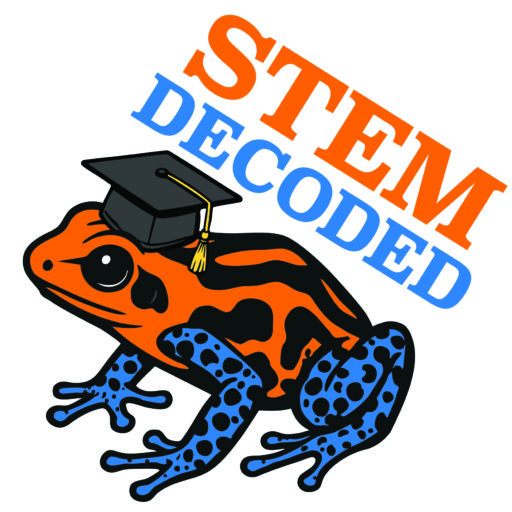Rewriting Life: The CRISPR-Cas9 System
By Sahana Lopelly
Every living organism on this planet has a genetic code—a sequence of chemical bases that programs who or what they are. But, what if there was a way to change that? Though it seems completely unreal, genetic engineering has become a very real concept thanks to the CRISPR-Cas9 system. Designed with the intention to precisely rewrite genetic information, CRISPR-Cas9 allows scientists to target, cut, and modify specific DNA sequences in order to treat diseases, study genes, and engineer new biological traits. To understand the gene editing process, it is required to take a closer look at its key components and how they work together to make targeted changes to DNA sequences.
The basis of the CRISPR-Cas9 system is the CRISPR sequence. Through his research in Spain, Francisco Mojica discovered these sequences. What he found that made them unique was that their genome matched snippets of the genome from bacteriophages (Broad Institute, n.d.). What makes this so crucial to understanding the system as a whole is that the CRISPR sequence serves as a permanent genetic record of past viral infections, storing the exact code of invading viruses within the bacterial DNA. This record allows the bacteria to “remember” each virus it has encountered, forming the foundation for its adaptive immune defense. CRISPR was originally found as a bacterial immune defense mechanism, but it has been adapted by scientists to edit genes in a wide range of organisms.
In the bigger picture, there is more that runs the gene editing system. Within the process of gene editing, there are many smaller steps that are taken to ensure that the genome is altered perfectly. When CRISPR is inserted into the target cell, it is made up of two components: sgRNA and Cas9. To start, an RNA strand specific to the target DNA sequence is crafted. This strand of RNA is known as the single-guide RNA (sgRNA), which combines the functions of two natural RNA molecules- the CRISPR RNA (crRNA) and the trans-activating CRISPR RNA (tracrRNA). The sgRNA guides the Cas9 protein to the exact location in the genome where the editing is necessary (Barrangou & Doudna, 2016; Jinek et al., 2012). The target DNA will be followed by a sequence known as the protospacer adjacent motif (PAM). This sequence is essential for Cas9 to bind and cut the DNA. One commonly used Cas9 protein from Streptococcus pyogenes recognizes the PAM sequence “NGG” (MedlinePlus, n.d.; Jinek et al., 2012). If the PAM sequence is not present, Cas9 cannot cleave the DNA and prevent unintended cuts.
Once guided to the target gene, the Cas9 protein does a double-stranded break three base pairs upstream from the PAM sequence. Within the Cas9 protein, there are two nuclease domains—HNH and RuvC—which cleave the complementary and noncomplementary strands, respectively (Jinek et al., 2012). Consequently, this break in DNA triggers the cell’s natural DNA repair mechanisms, which can be exploited to edit the genome in two main ways.
The first repair pathway is non-homologous end joining, in which broken DNA ends are rejoined in a careful manner. However, this process often results in insertions or deletions (indels) in the gene, disrupting it. Although this seems like a major disadvantage to the technique, it actually makes it useful for gene knockout experiments (PMC, n.c.). The second repair pathway is homology-directed repair, and it is known to be more precise. When a DNA repair template is supplied alongside CRISPR-Cas9, the cell can use the template to repair the break accurately, allowing insertion, deletion, or replacement of specific DNA sequences. This method is key when correcting genetic mutations or introducing new traits.
Thanks to genetic editing using CRISPR-Cas9, changing the code of life is now possible. Together, all these separate components and processes make CRISPR-Cas9 a powerful gene editing tool. With its ability to precisely cut, replace, or repair DNA, scientists can target genetic diseases, enhance crops, and uncover how genes shape living things. This discovery has promise for treating diseases that were previously believed to be incurable and resolving global issues like food security. CRISPR-Cas9 is not just any scientific discovery; it is one that rewrites what we have believed in the past and one that opens a future where we can shape life at its most fundamental level.
Bibliography:
Barrangou, R., & Doudna, J. A. (2016). Applications of CRISPR technologies in research and beyond. Nature Biotechnology, 34(9), 933–941. https://doi.org/10.1038/nbt.3659
Jinek, M., Chylinski, K., Fonfara, I., Hauer, M., Doudna, J. A., & Charpentier, E. (2012). A programmable dual-RNA–guided DNA endonuclease in adaptive bacterial immunity. Science, 337(6096), 816–821. https://doi.org/10.1126/science.1225829
Broad Institute. (n.d.). CRISPR timeline. Retrieved August 7, 2025, from https://www.broadinstitute.org/what-broad/areas-focus/project-spotlight/crispr-timeline
MedlinePlus Genetics. (n.d.). What are genome editing and CRISPR-Cas9? Retrieved August 8, 2025, from https://medlineplus.gov/genetics/understanding/genomicresearch/genomeediting/
PMC. (n.d.). Overview of CRISPR/Cas9. CRISPR/Cas9 is…. Retrieved August 8, 2025, from https://www.ncbi.nlm.nih.gov/pmc/articles/PMC4506319/
Ran, F. A., et al. (2015). Genome engineering using the CRISPR-Cas9 system. Nature Protocols, 8(11), 2281–2308. https://doi.org/10.1038/nprot.2013.143
